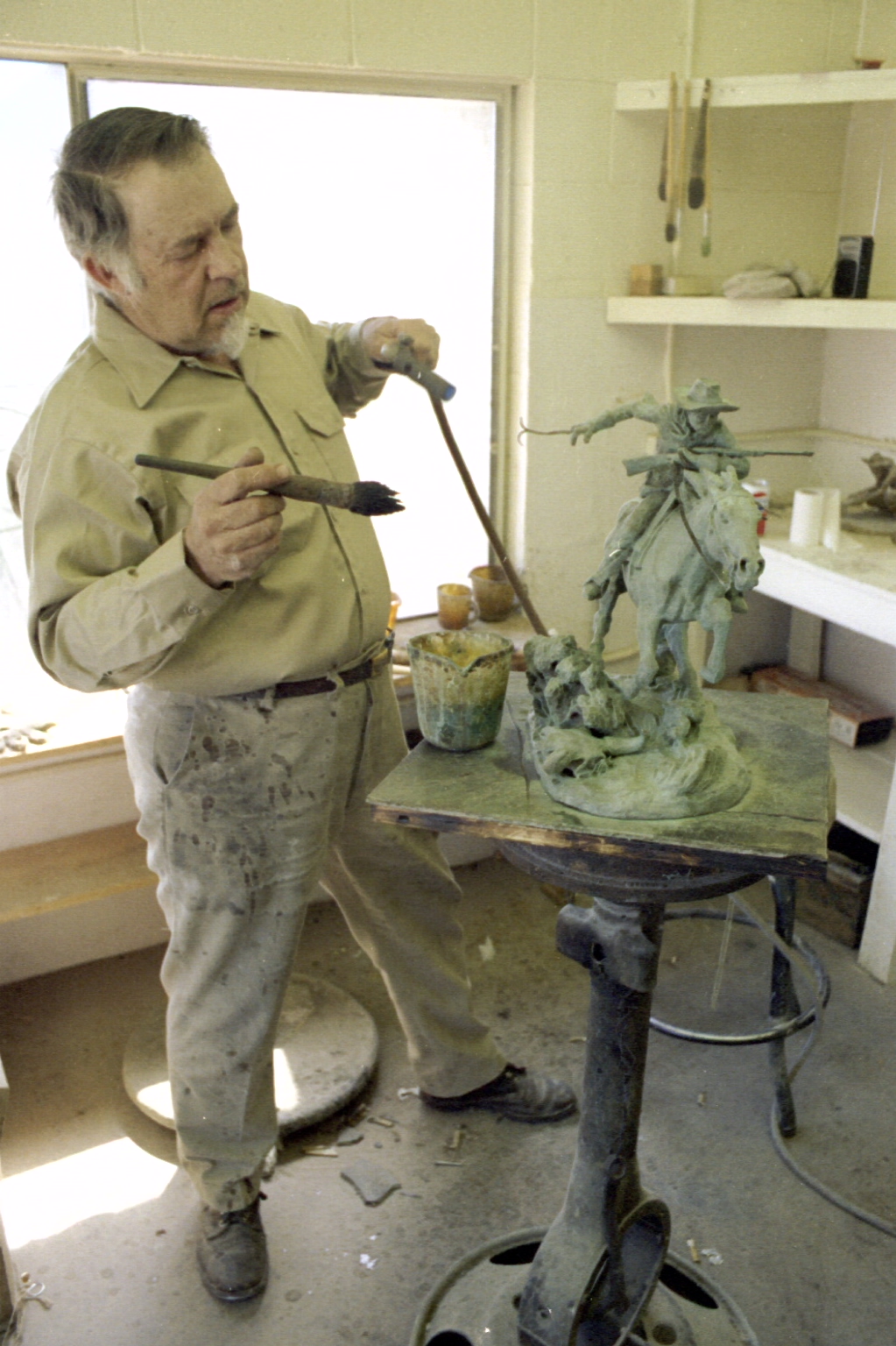Bob in the Scriver Studio shop. He's working on a commissioned portrait of the Mayre brothers.
Same thing -- over Bob's shoulder
More of the same. This was not the sort of shop that is kept orderly.
The cold room where the waxes were kept until it was time to cast them. These are either orders or maybe the pieces he expected to sell.
A wax held up to show the "sprues" and vents designed to let the molten bronze
flow into the mold and the fumes and air to emerge ahead of it.
The big foundry expanded to cast the major bucking horse piece that's in Helena.
The round shapes are the furnaces, sunk in the floor in case the crucible broke
so the molten bronze would not run out onto the feet of the workers.
The cradle for lifting the crucibles in and out were welded up by Bob.
The ovens for baking the molds. This was Roman Block casting so the mold
was a big mass of heat-resistant plaster. Even the molecular wax had to be baked out,
which took days at over a thousand degrees. The electric hoist was a major innovation.
Operating the electric hoist. Before that, there was a human hoist: me.
All the places where sprues and vents were attached had to be ground down.
Patining is accomplished by painting on a chemical solution
and then heating just enough to make it adhere/react.
More patining. A tedious job. In a while you could taste the chemicals.
Same again.
Entrance to the little gallery room.
Bison killed in a bull fight at Moiese plus the rattlesnake.
It really rattled if you put in a coin.
The diorama room: inch to a foot of every major game animal in Montana.
The strangely proportioned portrait of Charlie Russell that kicked off Bob's career.



















No comments:
Post a Comment